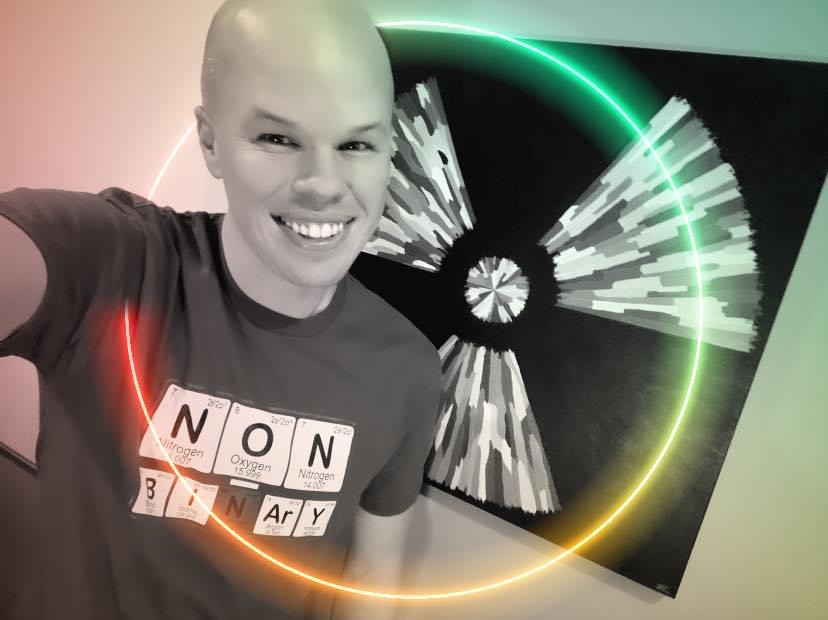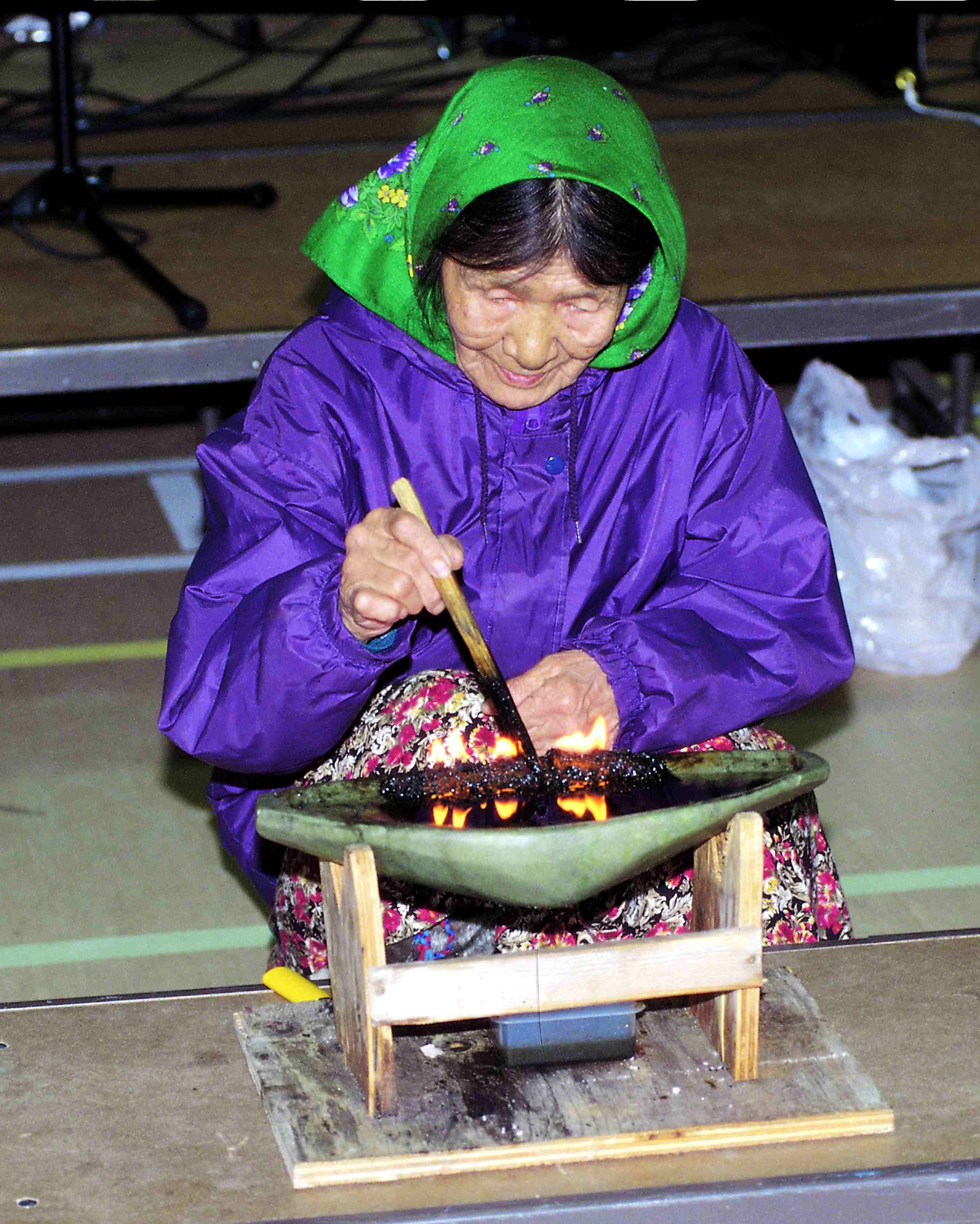|
Sipiniq
In Inuit culture, ''sipiniq'' (, from ''sipi'' meaning "to split", plural ''sipiniit'') refers to a person who is believed to have changed their physical sex as an infant, but whose gender is typically designated as being the same as their perceived original sex. In some ways, being ''sipiniq'' can be considered a third gender. This concept is primarily attested in areas of the Canadian Arctic, such as Igloolik and Nunavik. The Netsilik Inuit used the word ''kipijuituq'' for a similar concept. Birth The change of sex could occur as a fetus while still in the womb, or at the moment of birth. For example, a newborn infant might be perceived as having a penis and testicles that "split open" at the moment of birth to become a vagina and labia. That infant would be socially designated as being male despite possessing sex organs usually perceived as female. In a more complex example of a sex change that occurred before birth, one Inuit woman described having memories of being the soul ... [...More Info...] [...Related Items...] OR: [Wikipedia] [Google] [Baidu] |
Third Gender
Third gender is a concept in which individuals are categorized, either by themselves or by society, as neither man nor woman. It is also a social category present in societies that recognize three or more genders. The term ''third'' is usually understood to mean "other", though some anthropologists and sociologists have described fourth and fifthGraham, Sharyn (2001)Sulawesi's fifth gender Inside Indonesia, April–June 2001. genders. The state of personally identifying as, or being identified by society as, a man, a woman, or other, is usually also defined by the individual's gender identity and gender role in the particular culture in which they live. Most cultures use a gender binary, having two genders (boys/men and girls/women).Kevin L. Nadal, ''The SAGE Encyclopedia of Psychology and Gender'' (2017, ), page 401: "Most cultures currently construct their societies based on the understanding of gender binary—the two gender categorizations (male and female). Such societies ... [...More Info...] [...Related Items...] OR: [Wikipedia] [Google] [Baidu] |
Third Gender
Third gender is a concept in which individuals are categorized, either by themselves or by society, as neither man nor woman. It is also a social category present in societies that recognize three or more genders. The term ''third'' is usually understood to mean "other", though some anthropologists and sociologists have described fourth and fifthGraham, Sharyn (2001)Sulawesi's fifth gender Inside Indonesia, April–June 2001. genders. The state of personally identifying as, or being identified by society as, a man, a woman, or other, is usually also defined by the individual's gender identity and gender role in the particular culture in which they live. Most cultures use a gender binary, having two genders (boys/men and girls/women).Kevin L. Nadal, ''The SAGE Encyclopedia of Psychology and Gender'' (2017, ), page 401: "Most cultures currently construct their societies based on the understanding of gender binary—the two gender categorizations (male and female). Such societies ... [...More Info...] [...Related Items...] OR: [Wikipedia] [Google] [Baidu] |
Inuit Clothing
Traditional Inuit clothing is a complex system of cold-weather garments historically made from animal hide and fur, worn by Inuit, a group of culturally related indigenous peoples inhabiting the Arctic areas of Canada, Greenland, and the United States. The basic outfit consisted of a parka, pants, mittens, inner footwear, and outer boots. The most common sources of hide were caribou, seals, and seabirds, although other animals were used when available. The production of warm, durable clothing was an essential survival skill which was passed down from women to girls, and which could take years to master. Preparation of clothing was an intensive, weeks-long process that occurred on a yearly cycle following established hunting seasons. The creation and use of skin clothing was strongly intertwined with Inuit religious beliefs. Despite the wide geographical distribution of Inuit across the Arctic, historically, these garments were consistent in both design and material due to the ... [...More Info...] [...Related Items...] OR: [Wikipedia] [Google] [Baidu] |
Inuit Culture
The Inuit are an indigenous people of the Arctic and subarctic regions of North America (parts of Alaska, Canada, and Greenland). The ancestors of the present-day Inuit are culturally related to Iñupiat (northern Alaska), and Yupik (Siberia and western Alaska), and the Aleut who live in the Aleutian Islands of Siberia and Alaska. The term culture of the Inuit, therefore, refers primarily to these areas; however, parallels to other Eskimo groups can also be drawn. The word " Eskimo" has been used to encompass the Inuit and Yupik, and other indigenous Alaskan and Siberian peoples, but this usage is in decline. Various groups of Inuit in Canada live throughout the Inuvialuit Settlement Region of the Northwest Territories, the territory of Nunavut, Nunavik in northern Quebec and Nunatsiavut in Labrador and the unrecognised area known as NunatuKavut. With the exception of NunatuKavut these areas are sometimes known as Inuit Nunangat. The traditional lifestyle of the Inuit i ... [...More Info...] [...Related Items...] OR: [Wikipedia] [Google] [Baidu] |
Igloolik
Igloolik ( Inuktitut syllabics: , ''Iglulik'', ) is an Inuit hamlet in Foxe Basin, Qikiqtaaluk Region in Nunavut, northern Canada. Because its location on Igloolik Island is close to Melville Peninsula, it is often mistakenly thought to be on the peninsula. The name "Igloolik" means "there is a house here". It derives from meaning house or building, and refers to the sod houses that were originally in the area, not to snow igloos. In Inuktitut the residents are called Iglulingmiut (the suffix ''miut'' means "people of"). History Information about the area’s earliest inhabitants comes mainly from numerous archaeological sites on the island; some dating back more than 4,000 years. First contact with Europeans came when British Navy ships HMS ''Fury'' and HMS ''Hecla'', under the command of Captain William Edward Parry, wintered in Igloolik in 1822. The island was visited in 1867 and 1868 by the American explorer Charles Francis Hall in his search for survivors of the lost ... [...More Info...] [...Related Items...] OR: [Wikipedia] [Google] [Baidu] |
Angakkuq
The Inuit angakkuq (plural: ''angakkuit'', Inuktitut syllabics ᐊᖓᑦᑯᖅ or ᐊᖓᒃᑯᖅ; Inuvialuktun: '; kl, angakkoq, pl. ''angakkut'') is an intellectual and spiritual figure in Inuit culture who corresponds to a medicine man. Other cultures, including Alaska Natives, have traditionally had similar spiritual mediators, although the Alaska Native religion has many forms and variants. Role in Inuit society Both women, such as Uvavnuk, and men could become an angakkuq, although it was rarer for women to do so. The process for becoming an angakkuq varied widely. The son of a current angakkuq might be trained by his father to become one as well. A shaman might make a prophecy that a particular infant would become a prophet in adulthood. Alternatively, a young man or woman who exhibited a predilection or power that made them stand out might be trained by an experienced mentor. There are also instances of angakkuit claiming to have been called to the role through dreams o ... [...More Info...] [...Related Items...] OR: [Wikipedia] [Google] [Baidu] |
Transgender
A transgender (often abbreviated as trans) person is someone whose gender identity or gender expression does not correspond with their sex assigned at birth. Many transgender people experience dysphoria, which they seek to alleviate through transitioning, often adopting a different name and set of pronouns in the process. Additionally, they may undergo sex reassignment therapies such as hormone therapy and sex reassignment surgery to more closely align their primary and secondary sex characteristics with their gender identity. Not all transgender people desire these treatments, however, and others may be unable to access them for financial or medical reasons. Those who do desire to medically transition to another sex may identify as transsexual. ''Transgender'' is an umbrella term. In addition to trans men and trans women, it may also include people who are non-binary or genderqueer. Other definitions of ''transgender'' also include people who belong to a third gender, or ... [...More Info...] [...Related Items...] OR: [Wikipedia] [Google] [Baidu] |
Betty Kobayashi Issenman
Betty Kobayashi Issenman (1921 – March 10, 2020) was a Canadian ethnologist. As an independent researcher, she was an expert in Inuit clothing. She was appointed as a member to the Order of Canada The Order of Canada (french: Ordre du Canada; abbreviated as OC) is a Canadian state order and the second-highest honour for merit in the system of orders, decorations, and medals of Canada, after the Order of Merit. To coincide with the ... in 2002. Selected publications * '' Sinews of Survival: The Living Legacy of Inuit Clothing'' (University of British Columbia Press, 1997: ) References 1921 births 2020 deaths Canadian ethnologists Women ethnologists Members of the Order of Canada {{ethnologist-stub ... [...More Info...] [...Related Items...] OR: [Wikipedia] [Google] [Baidu] |
Human Sex Ratio
In anthropology and demography, the human sex ratio is the ratio of males to females in a population. Like most sexual species, the sex ratio in humans is close to 1:1. In humans, the natural ratio at birth between males and females is slightly biased towards the male sex: it is estimated to be about 1.05 or 1.06 or within a narrow range from 1.03 to 1.06 males per female. More data are available for humans than for any other species, and the human sex ratio is more studied than that of any other species, but interpreting these statistics can be difficult. The sex ratio of the total population is affected by various factors including natural factors, exposure to pesticides and environmental contaminants, war casualties, effects of war on men, sex-selective abortions, infanticides, aging, gendercide and problems with birth registration. The sex ratio for the entire world population is approximately 101 males to 100 females (2021 est.). Human sex ratios, either at birth or in ... [...More Info...] [...Related Items...] OR: [Wikipedia] [Google] [Baidu] |
Sterility (physiology)
Sterility is the physiological inability to effect sexual reproduction in a living thing, members of whose kind have been produced sexually. Sterility has a wide range of causes. It may be an inherited trait, as in the mule; or it may be acquired from the environment, for example through physical injury or disease, or by exposure to radiation. Sterility is the inability to produce a biological child, while infertility is the inability to conceive after a certain period. Sterility is rarely discussed in clinical literature and is often used synonymously with infertility. Infertility affects about 12-15% of couples globally. Still, the prevalence of sterility remains unknown. Sterility can be divided into three subtypes natural, clinical, and hardship. Natural sterility is the couple’s physiological inability to conceive a child naturally. Clinical sterility is natural sterility for which treatment of the patient will not result in conception. Hardship sterility is the inability to ... [...More Info...] [...Related Items...] OR: [Wikipedia] [Google] [Baidu] |
Pseudohermaphroditism
Pseudohermaphroditism is a condition in which an individual has a matching chromosomal and gonadal tissue (ovary or testis) sex, but mismatching external genitalia. Female pseudohermaphroditism refers to an individual with ovaries and external genitalia resembling those of a male. Male pseudohermaphroditism refers to an individual with testes and external genitalia resembling those of a female. In some cases, external sex organs associated with pseudohermaphroditism appear intermediate between a typical clitoris and penis. Thus, pseudohermaphroditism is sometimes not identified until puberty or adulthood. The term contrasts with true hermaphroditism, a condition describing an individual with both female and male reproductive organs. Associated conditions include 5-α-reductase deficiency and androgen insensitivity syndrome. Mechanism Sex is determined by chromosomes during fertilization. In the early stages of human development, a human embryo has the precursors of female (p ... [...More Info...] [...Related Items...] OR: [Wikipedia] [Google] [Baidu] |

.jpg)


